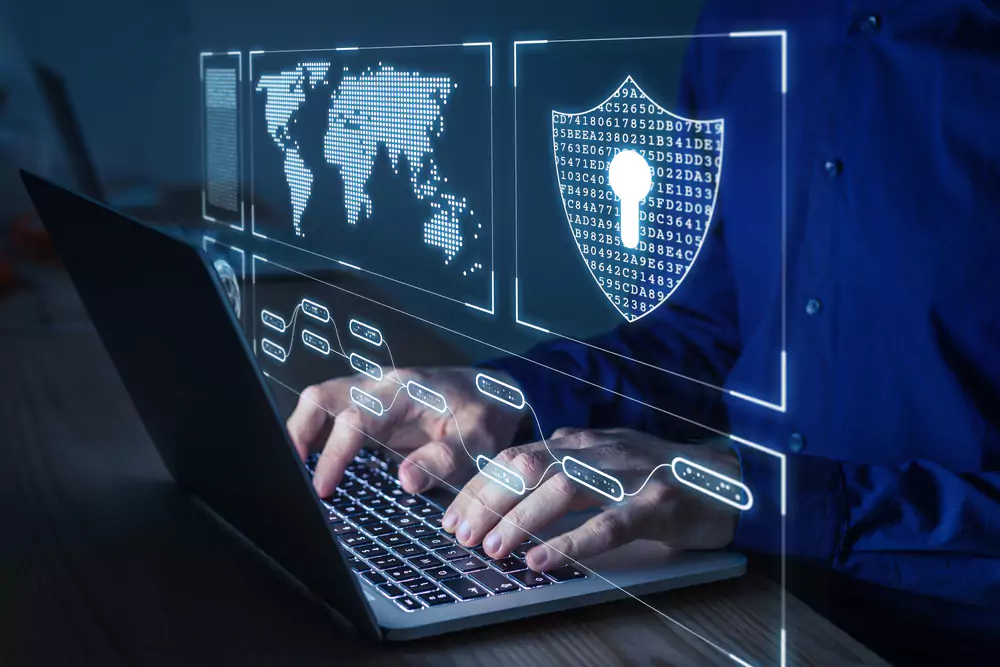
Cybersecurity is a dynamic and vital component of present day business and technology, given the ever-growing complexity and extent of cyber threats. The National Institute of Standards and Technology (NIST)
Cybersecurity Framework presents a comprehensive technique to improving cybersecurity efforts for companies huge and small. With its five key factors, the framework features as a bendy manner to cope with and manage cybersecurity risks in a constantly changing environment.
Here, we will delve into every of these factors, presenting a detailed evaluation of what they’re and how they make contributions to a strong cybersecurity posture. This publish serves as a compass for IT and cybersecurity professionals guiding them thru the nuances of the NIST framework and supporting them understand the way to practice its ideas inside their organizations.
The Importance of Cybersecurity Frameworks
Before we damage down the NIST Cybersecurity Framework, it is critical to focus on the importance of these established methods in the realm of virtual danger control. Frameworks like NIST offer a systematic basis for organizations to set up and enhance their cybersecurity applications. They offer diagnosed requirements, guidelines, and practices that organizations can align with to guard their records, systems, and networks.
Many businesses have adopted the NIST framework as a first-class practice in cybersecurity. It no longer best acts as a blueprint for defense against cyber-attacks however additionally harmonizes cybersecurity verbal exchange on a countrywide and global level. The NIST framework has been instrumental for groups that want to satisfy regulatory requirements and demonstrate due diligence in safeguarding virtual assets.
Identify
The “Identify” function represents the foundational establishment of an organisation’s cybersecurity framework. It is the detail that spans the principles of expertise and gaining visibility into the organization’s cybersecurity posture, hence laying the foundation for all cybersecurity sports.
Asset Management
Asset management is the essential mission of identifying and categorizing an enterprise’s hardware, software program, facts, and capabilities. This step is vital for knowledge what desires to be protected and setting up manage mechanisms.
Business Environment
Understanding the business context is essential for aligning cybersecurity with the business enterprise’s undertaking, objectives, and regulatory duties. A key focus right here is to assess what is most essential to business operations and continuity.
Governance
The creation of a governance structure provides a framework for the general cybersecurity method, managing danger, and the implementation and oversight of the company’s cybersecurity software.
Risk Assessment
Comprehensive and ongoing threat checks are pivotal. It encompasses figuring out, comparing, and prioritizing cybersecurity dangers to tell selections about what to address, and the implementation of systems and controls that steady assets.
Protect
The “Protect” feature indicates the activities that shield an company’s assets and guarantees transport of critical offerings. This is in which proactive and preventative measures are applied to prevent or minimize the impact of a capacity cybersecurity event.
Access Control
Access controls restriction and monitor who can have interaction with computing assets. This includes the principle of least privilege, in which people are granted the minimal stage of access that’s consistent with their task obligations
Awareness and Training
Employee consciousness and education applications train personnel on a way to behave in ways that minimize security dangers, consisting of the warning signs of phishing attempts or correct password tactics.
Data Security
Data safety features are put in place to guard information to fulfill confidentiality, integrity, and availability requirements, along with through encryption, use of backups, and stable statistics disposal.
Information Protection Processes and Procedures
This is the implementation of procedures to keep statistics integrity and confidentiality, and save you facts from being compromised by way of unauthorized get right of entry to, facts leakages, or being destroyed.
Detect
The “Detect” feature represents the strategic enterprise practice of developing and imposing systems that can perceive the prevalence of cybersecurity activities.
Anomalies and Events
The business enterprise need to increase and hold detection structures to become aware of cybersecurity anomalies and occasions in a timely manner.
Security Continuous Monitoring
Continuous monitoring alludes to a complete system to offer and keep the accessibility to touchy statistics that protects the network from internal and external threats.
Detection Processes
Detection procedures provide the ability to discover the prevalence of a cybersecurity event. The objective is to become aware of the breach as fast as possible.
Respond
Upon the detection of an incident, groups need a formalized reaction. The “Respond” feature offers with an employer’s practices for efficaciously responding to a detected cybersecurity occasion.
Response Planning
Having a formalized, complete and compliant incident response plan allows to reduce harm, increase stakeholder self belief, and enhance the organisation’s potential to respond and recover from a cybersecurity incident.
Communications
Communication is prime to controlling any incident. A clean line of communique ensures that each one necessary stakeholders are informed, and misinformation is averted.
Analysis
Post-incident evaluation pursuits to figure the foundation purpose of the incident and establish how the corporation may pass about enhancing its destiny reaction mechanisms.
Improvements
Fundamental to the response characteristic are intelligence and classes found out from preceding incidents, using enhancements in detective and response capabilities.
Recover
The “Recover” feature is set the control and healing of IT skills inside the aftermath of a cybersecurity attack. Through ‘Recovery’, corporations can restore any capabilities or competencies damaged within the attack.
Recovery Planning
Planning for recuperation is essential. This consists of understanding dependencies, engaging in physical activities, and outlining the steps for numerous sorts of cyber incidents.
Improvements
As with the reaction element, publish-incident evaluation will monitor areas for improvement in cyber restoration strategies. Organizational resilience is better through chronic refinement.
Communications
An powerful communication program guarantees that crucial humans are knowledgeable about the recuperation and recovery procedure, keeping stakeholder confidence and agree with.
Recovery and Improvement Planning
Develop and enforce plans for resilience and to repair any abilties or offerings which can be impaired due to a cybersecurity incident.
Conclusion
The NIST Cybersecurity Framework gives a dependent manner for groups to manipulate and limit cybersecurity risks. By understanding and imposing the factors of ‘Identify, Protect, Detect, Respond, and Recover’, businesses can establish a robust and adaptable cybersecurity application.
It is critical to word that cybersecurity isn’t a one-time task but an ongoing method that requires ordinary updates and vigilance. As cyber threats retain to conform, so too should the frameworks and techniques to cybersecurity. By taking a proactive, hazard-based totally technique, agencies can greatly decorate their security posture and defend their essential assets successfully.
Call to Action
Implementing the NIST Cybersecurity Framework can appear like a daunting mission, however the benefits are clean. Organizations that prioritize cybersecurity and comply with frameworks like NIST can enjoy decreased chance, improved compliance, and the accept as true with in their clients. Take the first steps toward a more resilient protection infrastructure today by means of engaging with the NIST framework and its elements.


